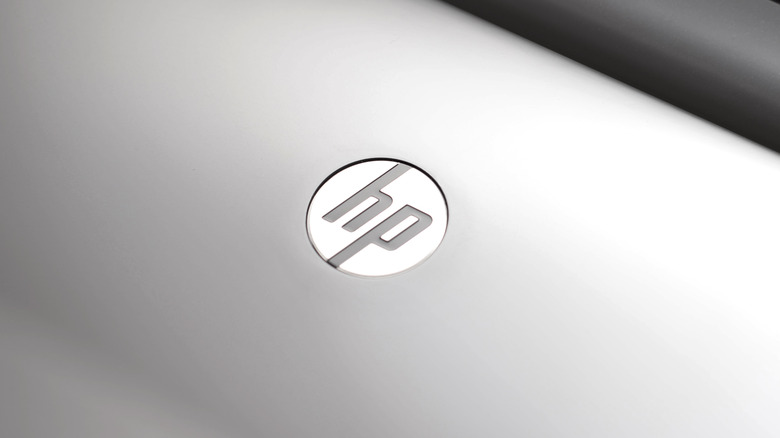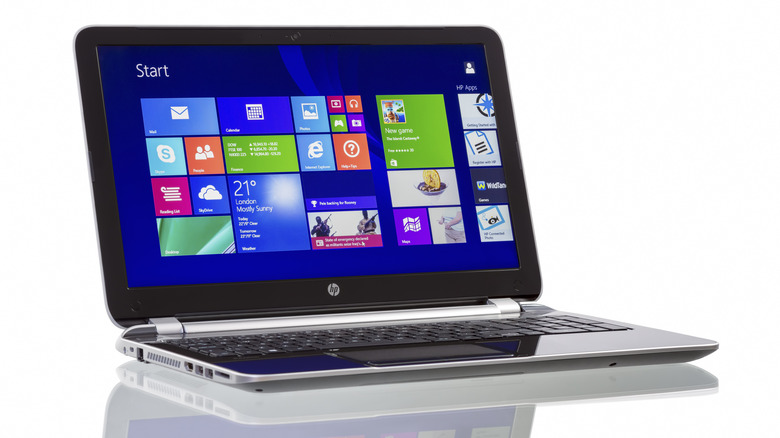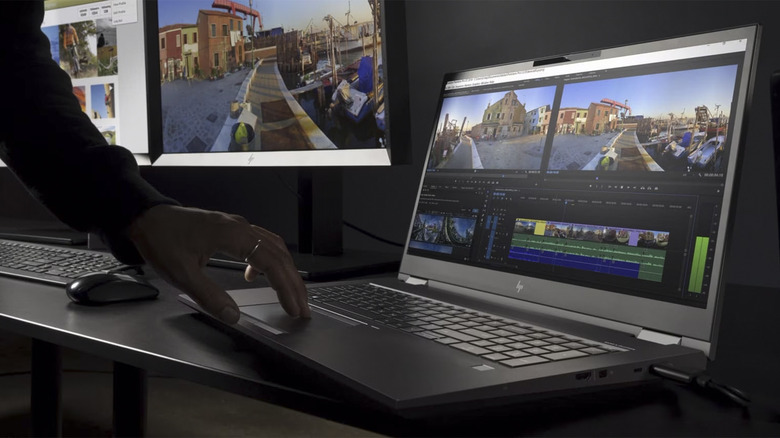Here's Where HP Computers And Laptops Are Made
HP — Hewlett Packard — is huge: It's the name on nearly 20% of every computer sold in 2023, placing it second behind Lenovo as the highest-selling computer brand by volume. And with a new line of PCs specifically aimed at hybrid workers, they're selling like hotcakes. That's a lot of silicon, but where do all those laptops and computers come from?
The short answer is HP computers are assembled in several plants located in the U.S., India, and China; with new plants opening in 2024 within Mexico, Thailand, and Vietnam. The long answer is a bit more involved. Much of the hardware used in HP computers is produced elsewhere, such as Malaysia and the Philippines. In fact, the complete supply chain and order of operations is so extensive that you could make the claim that HP computers are manufactured all over the world.
To truly understand where your trusty HP laptop came from, you'll have to first understand HP's history, and then how earth metals, plastics, and semiconductors arrive at the assembly plants as pre-made computer hardware parts.
A brief history of Hewlett-Packard manufacturing
HP computers weren't always manufactured overseas. Founded in 1939, the company was originally formed in Palo Alto, California. Two American entrepreneurs — the eponymous Bill Hewlett and David Packard — initially started HP as an electronics-testing company based in the U.S. It wouldn't be many years before HP became associated with computers.
When the PC revolution was sparked in the 1980s, Hewlett-Packard was at the forefront. The first HP personal computers to hit the market were manufactured in the United States. However, sales quickly expanded to foreign markets, and assembly plants were promptly opened in China. The city of Chongqing in particular boomed over the next 40 years, as multiple manufacturing plants began the majority of assembly and production in Asian markets, as well as the U.S.
HP computers sold in America and Europe are typically manufactured in the United States. HP computers sold in Asia are typically assembled and produced in China, with parts manufactured in India. That was largely true until an official statement in September of 2023 announced a new, diverse direction for the PC giant.
As reported by Nikkei, Hewlett-Packard is moving a significant portion of its manufacturing operations from China to facilities in Thailand, Mexico, and Vietnam. Thailand is the destination for a percentage of HP's consumer laptops, and Mexico will be the new source of many productivity-first "commercial notebooks" — meaning don't expect a gaming laptop like the latest OMEN to come from Mexico. However, according to HP, Chongqing and the other Chinese hubs won't be forgotten, with the Chinese "laptop city" still producing the majority of HP computers for the Asian market.
All the different sources of your HP's hardware
HP computers are assembled in plants based in China, Thailand, India, Mexico, Vietnam, and the U.S. (one plant in Indianapolis, Indiana has thousands of employees alone). These are also the birthplaces of the HP printers. However, the parts themselves are often built elsewhere and shipped to the assembly plants.
HP's massive global reach involves not only supply chains. HP-brand parts are also sold to retailers across the world. For example, HP has its own manufacturing facilities in Taiwan, but it also collaborates with local Taiwanese tech companies to produce hardware from raw materials. Only a few HP computer models are assembled in Taiwan, while a vast portion of the supply, research, and parts manufacturing runs through Taiwan's private sector.
Another good example of HP's expansive supply chain is the source of its processors. For instance, one of the latest models — the HP 17t-cn300 — boasts a 12-thread Intel Core i5-1335U processor, capable of reaching up to 4.6GHz under load. HP certainly didn't make that powerful processing unit: Intel processors are made in over 10 different facilities spread throughout the world, with manufacturing plants in North America, Europe, and Asia. HP then purchases those processors which are installed in its laptops and computers.
Like many of the modern world's technology, each HP laptop's journey isn't a straight line. Various parts are made in various countries from raw materials from various sources, so tracking everything down is nearly impossible. With new announcements for facilities in places like Mexico and Vietnam, we can only expect the HP supply chain to grow more complex over time.


